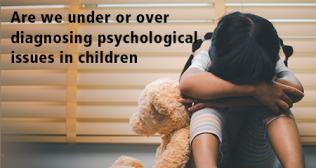
What Is Disordered Eating? Causes, Signs, and How to Get Help
Our relationship with food is one of the most fundamental connections in our lives. It is tied to our culture, our families, our celebrations, and our daily survival. In a healthy relationship, food is a source of nourishment and enjoyment. However, in a world saturated with messages about ideal body types, "clean eating," and restrictive diets, this relationship can become strained, leading to a pattern of harmful behaviors known as disordered eating.
This is a term that is often confused with clinical eating disorders, but it occupies a wide and often gray area on the spectrum of eating behaviors. For parents and caregivers, recognizing the subtle signs of these struggles, especially in children and adolescents, is the first and most critical step toward providing support. This guide will explain what disordered eating is, its causes, the warning signs to watch for, and how you can help.
What Is Disordered Eating?
Disordered eating refers to a range of irregular, troublesome, and often distressing eating behaviors that do not meet the strict diagnostic criteria for a specific eating disorder like anorexia nervosa or bulimia nervosa. While not a formal diagnosis itself, it is a serious issue that can significantly impact a person's physical health, emotional well-being, and daily life. It often involves an unhealthy preoccupation with food, body weight, and shape that goes beyond normal dieting or healthy eating concerns.
It's important to understand this distinction:
- Healthy Eating: Involves being mindful of nutrition for the sake of health and well-being, without rigid rules or guilt.
- Disordered Eating: Involves disruptive and unhealthy patterns, such as chronic dieting, skipping meals, or feeling intense anxiety around food.
- Eating Disorders: Are severe, diagnosable mental illnesses with specific criteria, such as anorexia nervosa, bulimia nervosa, and binge eating disorder.
Crucially, disordered eating is a major risk factor for developing a full-blown eating disorder. Intervening early is key to preventing this progression.
Causes and Risk Factors
There is no single cause for disordered eating. It typically arises from a complex interplay of psychological, social, and biological factors.
- Psychological Factors: Low self-esteem, perfectionism, anxiety, depression, and poor body image can all contribute. Eating behaviors can become a way to cope with difficult emotions or to feel a sense of control when other parts of life feel chaotic.
- Social and Cultural Pressures: Society's relentless promotion of an "ideal" body type, especially through social media, can create intense pressure to be thin. This can lead to a cycle of dieting and body dissatisfaction from a very young age.
- Family and Peer Environment: A home environment that places a strong emphasis on weight and dieting can normalize unhealthy behaviors. Teasing or bullying about weight from peers can also be a significant trigger.
- Biological Factors: There may be a genetic predisposition. Having a close relative with an eating disorder can increase a person's risk.
Recognizing the Signs: Child Eating Disorders Symptoms
In children and adolescents, the signs of disordered eating can be subtle. They may be dismissed as "picky eating" or a normal part of growing up, but it's important for parents to be vigilant. The child eating disorders symptoms to watch for include:
Changes in Eating Habits
- Suddenly adopting a very restrictive diet (e.g., cutting out entire food groups like carbs or fats).
- Skipping meals or claiming they have already eaten.
- Developing rigid rituals around food, such as cutting food into tiny pieces or eating foods in a specific order.
- Showing intense anxiety about eating in front of others or at social gatherings.
Preoccupation with Body and Weight
- Frequent self-criticism about their body shape or weight.
- Obsessively weighing themselves.
- Wearing baggy clothes to hide their body shape.
Emotional and Behavioral Changes
- Withdrawing from friends and usual activities.
- Showing signs of depression, anxiety, or irritability, especially around mealtimes.
- Denial that a problem exists, even when patterns are obvious.
Evidence of Bingeing or Purging
- Finding hidden food wrappers or large amounts of food disappearing can be a sign of child eating disorders overeating (bingeing).
- Frequent trips to the bathroom immediately after meals could indicate purging behaviors.
How to Help a Child with an Eating Disorder or Disordered Eating
Discovering that your child is struggling with their relationship with food can be frightening. Your response is crucial. The goal is to create a supportive, non-judgmental environment. Here's how to help a child with an eating disorder:
- Communicate with Care: Choose a calm, private moment to express your concerns. Use "I" statements, such as "I've noticed you seem worried about food lately, and I'm concerned about you," instead of accusatory "you" statements.
- Avoid Placing Blame: Do not blame your child or yourself. This is a complex issue, not a choice or a failure of willpower.
- Be a Positive Role Model: Model a healthy relationship with your own body and with food. Avoid talking negatively about your own weight or labeling foods as "good" or "bad."
- Focus on Health, Not Weight: Shift the family conversation away from weight and appearance. Instead, talk about food in terms of nourishment, energy for activities, and enjoyment.
- Encourage Open Dialogue: Let your child know that you are there to listen without judgment whenever they are ready to talk.
Seeking Professional Help: Child Eating Disorders Treatment
Disordered eating is not something a child can simply "get over." It requires professional intervention. The earlier you seek help, the better the chances of a full recovery.
The ideal child eating disorders treatment involves a multidisciplinary team:
- A Medical Doctor or Pediatrician: To monitor your child's physical health, including their weight, heart rate, and any nutritional deficiencies.
- A Mental Health Professional: A therapist or psychologist with expertise in eating disorders can help your child address the underlying emotional and psychological issues. Therapies like Cognitive Behavioral Therapy (CBT) or Family-Based Treatment (FBT) are often used.
- A Registered Dietitian: A dietitian can help your child relearn normal eating patterns, challenge food fears, and develop a healthy, balanced approach to nutrition.
The Path to a Healthier Relationship with Food
The journey to heal from disordered eating takes time, patience, and professional guidance. It involves untangling complex emotions and relearning how to view food as a source of strength and pleasure, not fear. As a parent, your unwavering support, love, and willingness to seek help are the most powerful tools you have to guide your child back to a path of health and well-being.
Frequently Asked Questions
1. What is the difference between picky eating and disordered eating in a child?
Ans. Picky eating is usually about taste and texture preferences. Disordered eating is driven by anxiety about weight, body shape, or the caloric content of food, and is accompanied by emotional distress.
2. Can boys develop disordered eating?
Ans. Yes. While more commonly associated with girls, boys and young men are also at significant risk, often driven by a desire for a muscular physique rather than thinness.
3. My child seems to be overeating all the time. Is this an eating disorder?
Ans. Frequent episodes of eating large amounts of food, especially in secret and accompanied by feelings of guilt or shame, can be a sign of binge eating disorder, which is a serious condition requiring professional help.
4. How do I talk to my child about social media's impact on body image?
Ans. Have open conversations about the fact that images online are often filtered and do not represent reality. Encourage them to follow accounts that promote body positivity and diverse body types.
5. What should our family meals look like?
Ans. Try to have regular family meals in a relaxed, pleasant environment. Serve a variety of foods and let your child choose from what is offered without pressure or commentary.



















